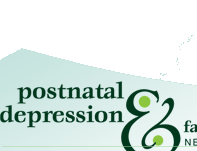
ZIPRASIDONE
This section is designed to inform professionals.
(For consumers, see Ziprasidone Fact Sheet)
Available as Zeldox.
- It is used to treat schizophrenia.
- It is also used to treat episodes of mania or mixed episodes in patients with bipolar disorder but is not yet approved by Pharmac for this use, in NZ.
- Care is needed in people with known QT prolongation.
- Care should be taken when initiating therapy to avoid initial high doses, rapid dose escalation, interrupted therapy and abrupt withdrawal.
USE IN PREGNANCY
Category C
- Animal studies have shown an adverse effect.
- There are no adequate and well-controlled studies in pregnant women. Women of child-bearing potential receiving Ziprasidone should therefore be advised to use an appropriate contraception.
- As human experience is limited, administration of Ziprasidone is not recommended during pregnancy unless the expected benefit to the mother outweighs the potential risk to the fetus.
- Vaux and Jones reported on a child who was pre-natally exposed to Ziprasidone and was born with malformations of face and the extremities. The baby was born to a 28-year-old woman with schizophrenia who was treated with Ziprasidone during her pregnancy. The dose and duration of Ziprasidone treatment were not reported. There were no complications during her pregnancy and the mother denied using any other medications or illicit substances. The child was born by spontaneous vaginal delivery and was small for gestational age (34 weeks). The authors suggested that the malformations seen could have been caused by pharmacologically induced effects of Ziprasidone on the foetal heart that led to bradycardia in the embryo and subsequent episodes of hypoxia and reoxygenation injury.
USE IN LACTATION
Category L3/L4
- No data are available on its transfer into human milk.(10)
- There are no controlled studies in breastfeeding women; however, the risk of untoward effects to a breastfed infant is possible.
- Drugs should begiven only if the potential benefit justifies the potential risk to the infant.
- Patients should be advised not to breastfeed an infant while receiving Ziprasidone.
- A computerized search of the medical literature has not identified references that specifically discuss the use of Ziprasidone during pregnancy or in nursing mothers.
References
1. Medsafe: Information for the Health Professional.
2. Medline Plus: Trusted Health information for you.
3. Pfizer Australia: Medical Information provided by Medical affairs.
4. Ziprasidone: Drug information provided by Micromedex; MayoClinic.com December, 2007.
5. Davis R, Markham A: Ziprasidone. CNS Drugs 1997; 8:153- 157
6. Schmidt AW, Lebel LA, Howard HR Jr, Zorn SH: Ziprasidone: A novel antipsychotic agent with a unique human receptor binding profile. Eur J Pharmacol 2001; 425: 197-201.
7. Salvatore Gentile (2004): Clinical utilization of Atypical Antipsychotics in Pregnancy and Lactation. The Annals of pharmacotherapy: vol. 38, No. 7 pp. 1265-1271.
8. Deborah Yaeger, M.D., Healey G. Smith, M.D., Lori L. Altshuler, M.D.: Atypical Antipsychotics in the treatment of Schizophrenia during pregnancy and the postpartum. Am J Psychiatry 163:12, December 2006.
9. Vaux KK, Jones KL: Ziprasidone embyopathy: are the defects caused by pharmacologically induced fetal arrhythmias. J Invest Med 2005, 53(suppl 1): S137.
10. Thomas W. Hale (2004). Eleventh Edition. Medication and Mothers’ Milk.
|






